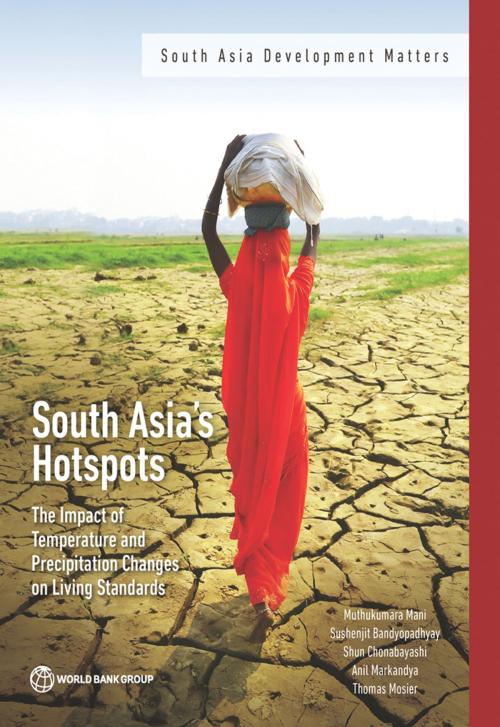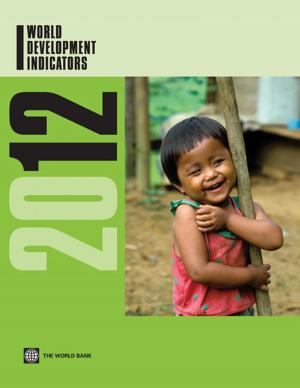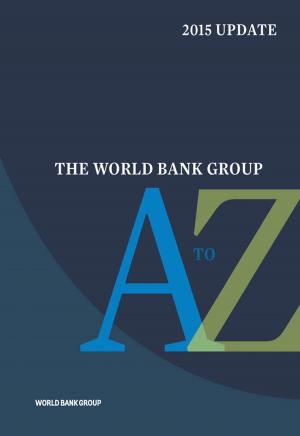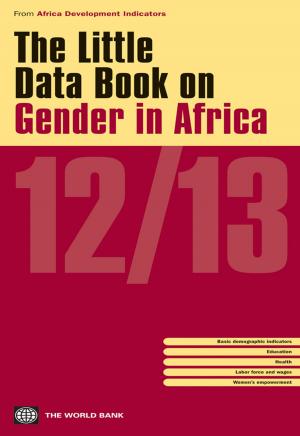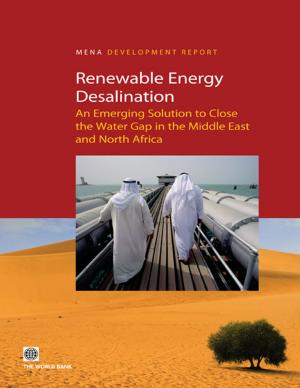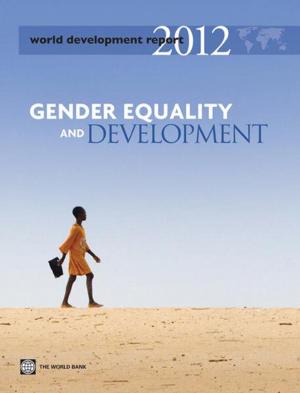South Asia's Hotspots
The Impact of Temperature and Precipitation Changes on Living Standards
Business & Finance, Marketing & Sales, Commerce, Economics, Sustainable Development, Development & Growth| Author: | Muthukumara Mani, Sushenjit Bandyopadhyay, Shun Chonabayashi, Markandya | ISBN: | 9781464811562 |
| Publisher: | World Bank Publications | Publication: | July 12, 2018 |
| Imprint: | World Bank Publications | Language: | English |
| Author: | Muthukumara Mani, Sushenjit Bandyopadhyay, Shun Chonabayashi, Markandya |
| ISBN: | 9781464811562 |
| Publisher: | World Bank Publications |
| Publication: | July 12, 2018 |
| Imprint: | World Bank Publications |
| Language: | English |
South Asia is particularly vulnerable to climate change. Most previous studies have focused on the projected impacts of sea-level rise or extreme weather - droughts, floods, heatwaves and storm surges. This study adds to that knowledge by identifying the impacts of long-term changes in the climate †“ rising temperatures and changes in precipitation patterns †“ on living standards. It does so by first building an understanding of the relationship between current climate conditions and living standards across South Asia. The study also identifies the set of climate models that are best suited for projecting long-term changes in climate across South Asia. This novel understanding of living standards and climate change is then combined to project impacts of long-term changes in climate on living standards in South Asia. The study finds that higher temperatures will reduce living standards for most of South Asia, with the severity impacts depending on future global greenhouse gas emissions. The study projects “hotspots†?, which are locations where long-term changes in climate will have negative impacts on living standards. Many hotspots are in locations that hitherto have not been identified as particularly vulnerable to climate change. Moreover, hotspots have distinguishing features that vary from country to country. This detailed assessment provides a mosaic of information that enriches our understanding of how climate change will impact people and which populations are most vulnerable. The report also provides guidance on the kinds of actions are most likely to reduce impacts of climate change in each country. The study is a major contribution to our understanding of how increasing temperatures and changing precipitation patterns interact with social and economic structures at a fine granular level across South Asia.
South Asia is particularly vulnerable to climate change. Most previous studies have focused on the projected impacts of sea-level rise or extreme weather - droughts, floods, heatwaves and storm surges. This study adds to that knowledge by identifying the impacts of long-term changes in the climate †“ rising temperatures and changes in precipitation patterns †“ on living standards. It does so by first building an understanding of the relationship between current climate conditions and living standards across South Asia. The study also identifies the set of climate models that are best suited for projecting long-term changes in climate across South Asia. This novel understanding of living standards and climate change is then combined to project impacts of long-term changes in climate on living standards in South Asia. The study finds that higher temperatures will reduce living standards for most of South Asia, with the severity impacts depending on future global greenhouse gas emissions. The study projects “hotspots†?, which are locations where long-term changes in climate will have negative impacts on living standards. Many hotspots are in locations that hitherto have not been identified as particularly vulnerable to climate change. Moreover, hotspots have distinguishing features that vary from country to country. This detailed assessment provides a mosaic of information that enriches our understanding of how climate change will impact people and which populations are most vulnerable. The report also provides guidance on the kinds of actions are most likely to reduce impacts of climate change in each country. The study is a major contribution to our understanding of how increasing temperatures and changing precipitation patterns interact with social and economic structures at a fine granular level across South Asia.
